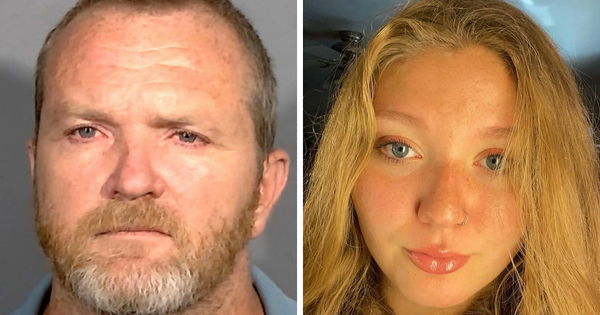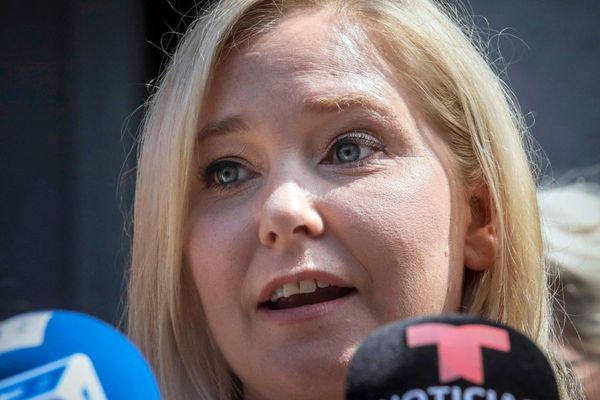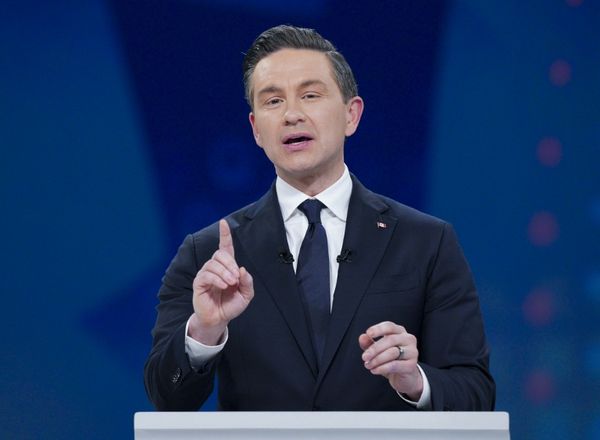
On Sunday evening in Tampa, the NCAA will crown a new national champion in women’s basketball. The next night in San Antonio, it will be the men’s turn to hoist the organization’s iconic wooden trophy.
In the hours between, on Monday morning, at a courthouse in Oakland, one of the most consequential decisions in college athletics will take place in the U.S. District Court of Northern California.
Due to the amount of interest, judge Claudia Wilken will hold a final settlement hearing in the class-action case House v. NCAA across two sprawling courtrooms. If approved, as most expect, it will usher in a revolutionary change to how athletic departments operate and is poised to be the biggest refashioning of college sports since a landmark 1984 Supreme Court decision paved the way for television to become ever more ubiquitous for schools and conferences.
“I think there are a lot of people who believe that the process of getting [to a final settlement] will be complicated, and probably messy, but at the end of the day, it will be a huge improvement over where we’ve been historically,” NCAA president Charlie Baker said in January. “I’m really just focused on getting this thing approved. I think one of the things that people should remember here is that nothing in this space ever happens all at once. It all ends up being incremental. You can push it as hard as you want, and I certainly talked about creating some sort of framework like this a year ago. I’m thrilled with where we are with regard to that and a lot of people worked really hard to make that happen.”
It’s important to note that Monday’s hearing is actually a proposed settlement of three different cases against the NCAA and the five autonomy conferences—the ACC, Big Ten, Big 12, Pac-12 and SEC.
Former Arizona State Sun Devils swimmer Grant House is the lead plaintiff of the main antitrust lawsuit that bears his name and seeks damages from the NCAA’s previous rules regarding name, image and likeness, as well as allowing athletes to share in the revenue created from broadcasts. Hubbard v. NCAA is another class-action lawsuit against the association and the conferences surrounding damages related to Alston awards (themselves, the product of a lawsuit that was decided by the Supreme Court in 2021). Finally, Carter v. NCAA is focused on athletes having been denied benefits beyond their scholarships and related expenses they would have otherwise been entitled to had NCAA bylaws not prevented them from doing so.
All of the parties agreed to consolidate their cases and, last year, to settle them as part of a wide-ranging 10-year deal. Schools are set to pay out just shy of $2.6 billion in damages to current and former student-athletes who competed since 2016 in Division I and opted into the agreement. The vast majority of this amount—roughly 75%—is slated to be paid out to former football players, with about a fifth going to basketball players and the final 5% split between athletes in other sports. Some high-profile football players are set to receive six-figure checks as early as May.
The dollar figures involved in the settlement may raise an eyebrow, but the result with the most impact is forward-looking: permitting the direct sharing of revenue with players over the next decade. Schools across Division I need to opt in to do this (you may have seen a slew of announcements from various leagues or schools announcing they would be) yearly, but those in the five autonomy, or Power 5, conferences will be required to.
The bottom line remains that for the first time starting this fall, just about every major program will be directly paying players some form of compensation beyond the typical scholarships and associated awards they normally receive.
How much current players will receive is set to vary considerably based on a number of factors, but every program is capped at 22% of the average power school’s media-rights revenue, ticket sales and sponsorship revenue. This “salary cap” is set to be a pool of $20.5 million to share starting with the 2025–26 school year. It will escalate roughly 4% each season before being fully recalculated every three years. Schools that go over the prescribed amount will be punished (more on that later).
Economists who consulted for the case believe that between the revenue-sharing figures mentioned above and the typical benefits a student-athlete may receive (housing, books, scholarships, etc.), players will end up sharing essentially half the revenue an athletic department generates in a similar split to their professional counterparts in the NBA or NFL.
It will also force a system-wide revamp for the NCAA and schools' operations. There is a newly assembled committee tasked with actually implementing the settlement once approved. It will go beyond changing a slew of outdated bylaws over the coming months. Rest assured, though, that will happen, too, starting with the NCAA Division I Board of Directors meeting at the end of the month in order to make this all permissible.
Perhaps the most front-facing change for some administrators is that LBi Software has been hired to build and maintain a cap management platform for schools to use. The company has built similar salary cap software for leagues, like MLB, the NBA and the NWSL, and is in the final stages of bringing that to the college side, with personnel expected to undergo training this summer in order to ensure all payments are on the up and up.
In a unique aspect of the settlement, the autonomy conferences are also forming an outside LLC whose purpose is centered on enforcement. It is fully separate from the NCAA national office’s current enforcement arm (which will refocus on eligibility and gambling cases) and is set to police everything from compliance with the salary cap to issues surrounding external NIL deals circumventing the process to, even, handing out penalties for potential violators.
“There will be accountability for the membership. That’s what we’re signing up for,” says one source involved in the process. “We know that we do not want this to be NCAA 2.0.”
There is still much to be finalized regarding the unnamed entity. Multiple sources tell Sports Illustrated the Power 5 conference commissioners are expected to pick up the pace after the Final Four in leading a process to hire a CEO to oversee the joint venture. Executive search firm Egon Zehnder has been retained as part of the search process for the position, a notable move given the European-based firm is not heavily involved in the college athletics space compared to some of its peers.
The thinking is that this CEO, alongside a small team of investigators and lawyers, would operate like how NFL commissioner Roger Goodell does with regard to doling out punishments to schools who try to circumvent the hard cap when it comes to compensating players. The wide variety of potential penalties have not been finalized, but early concepts range anywhere from a fine for the school involved to suspensions for coaches or administrators involved in the rule breaches.
Alongside this is perhaps the most controversial of changes as a result of the settlement: a clearinghouse developed in conjunction with consulting firm Deloitte that will monitor and determine the fair market value of all third-party NIL deals for athletes. Any transaction over $600, be it a national ad campaign a player may sign with the likes of Gatorade or Nike, to a local car dealership ad in a small college town, will not only have to be submitted, but vetted.
“We know there’s going to be a lot of attention there,” says a source briefed on the subject.
That might be putting it mildly. Just about everybody SI spoke to in recent months, from agents to athletic directors to coaches, believes this is perhaps the area sure to receive the most public-facing blowback from the settlement. While there is an arbitration process should disputes arise, it is likely only a matter of time before another lawsuit arises when a player submits a deal that is ultimately rejected.
This is particularly relevant regarding payments from school collectives or boosters and a reason why there has been a rush, even ongoing this week, to get things signed and paid out to players prior to Monday. If things are agreed to after Monday, things will have to be reported as part of the new process and subject to greater scrutiny.
The skepticism, if not downright criticism, of the settlement’s underlying impact does not stop there. Title IX isn’t directly addressed in the case and is one area where experts are already anticipating a slew of additional class-action suits being filed against the NCAA, especially for schools who distribute the majority of their revenue to football and men’s basketball players instead of evenly across sports.
Roster limits are another area central to arguments from objectors who will speak to Judge Wilken in court on Monday. The settlement effectively replaces the previous NCAA scholarship limits with a far more finite roster limit. In a sport like baseball, teams were previously limited to splitting 11.7 full scholarships across a maximum of 27 players. Moving forward, teams can have no more than 34 players—potentially all of whom could be on a full scholarship. Football is set to be bumped up from the current 85 to 105.
Amid such increases, a boon to certain programs like SEC baseball teams or Big 12 softball squads who no longer will have to compete for players with less than a full ride to school, there are also some cuts coming in the future that will have an adverse impact on some Olympic sports. Several thousand roster spots are set to be cut as a result of the settlement (despite an overall increase in scholarships available) and some coaches are already having difficult conversations with their players as teams with 40 or more players may be cut in half. Walk-ons are set to be a thing of the past.
Even more controversially is what the settlement does not address: collective bargaining or the subject of athletes as employees. There is already a lawsuit moving through the system with regard to the latter, and the NCAA has kept the former at arm’s length for the most part.
Momentum is also fading when it comes to getting a crucial antitrust exception for the association and its schools from Congress, a key factor in stemming the tide of court orders that popped up in recent years. The House Subcommittee on Health, Employment, Labor and Pensions is holding a hearing Tuesday. On Wednesday, over 100 conference commissioners, athletic directors, coaches and student-athletes are set to visit Washington, D.C., to lobby lawmakers in what is being labeled “College Sports Day on the Hill.”
Despite such meetings, however, there has been little actual movement toward getting a bill to the floor.
Baker, the former Massachusetts governor, remains hopeful in getting something tangible this calendar year and believes that next Monday could represent a more than subtle shift in the right direction—proving to Congress, and others, that the NCAA is starting to get its house in order because of this settlement.
“I think that [Baker] and the NCAA will feel very good about college sports going forward as a result of the changes by the House settlement. I hope that they will continue to focus on other changes outside [the settlement],” says Jeffrey Kessler, a veteran antitrust lawyer who is co-lead counsel for the plaintiffs in the case. “I view it as a really big step, but it shouldn’t be the end of the process.”
More on Sports Illustrated
This article was originally published on www.si.com as Landmark House Settlement Set for Final Approval: Here’s What to Know.







